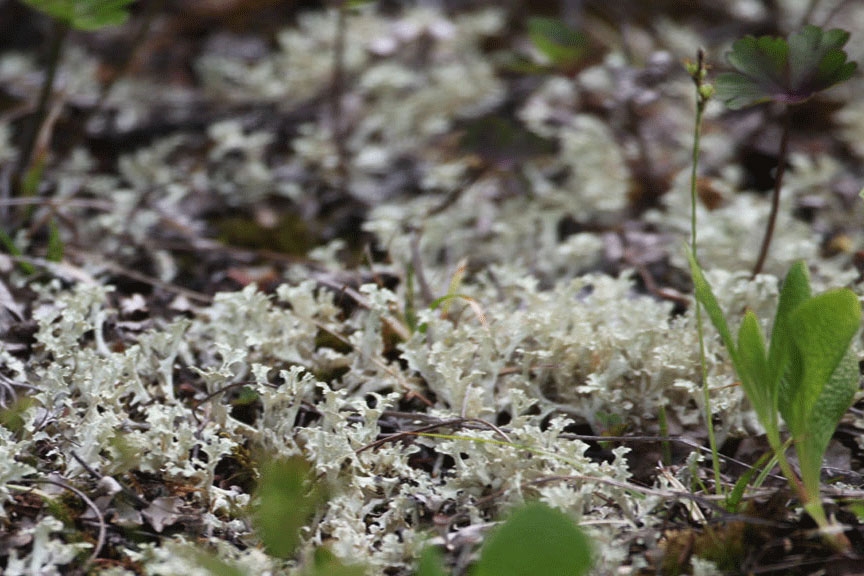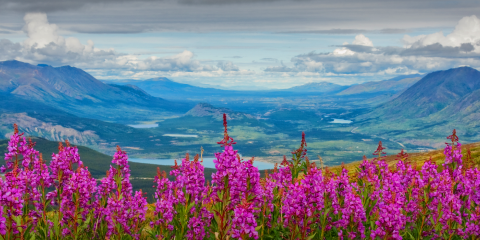
Caribou are one of the regions mammals especially well adapted for life in the North. As well as its hollow hair coat, their hooves are cleverly designed. Splayed as a snow shoe, the hoof spreads it weight over a wide area so that the animal does not sink into the soft deep snow, or in the thick wet spongy muskeg. These hooves are used for pawing or cratering in the snow to uncover lichen a main winter food source. One of their favourites is aptly called Caribou Moss.
One of the other large resident ruminants is, of course, the horse like Moose. One of the most photographed animals in the north, and one prized by hunters in the fall. Moose, like Caribou have hollow hairs, but they do not have the splayed hooves. This creates a big difference in their habits. Caribou wander over long distances throughout the year, while Moose tend to stay closer to home!
Winter is a challenging time for all of us in the North, but especially for cow moose. Cows, often have last year’s calf in tow, and are pregnant. They must find sufficient food, and avoid the hungry packs of wolves, which are a constant threat.
During a severe cold snap moose tend to bed down in the thickets produced by willow. Here they rest, while their metabolism slows down to preserve energy and retain as much heat as possible. During these periods, when they cannot produce enough nutrients from grazing to fuel their system, they use up the precious fat that they have stored from the plentiful food supply that summer and fall provide.
Our area is densely colonised by thickets of willow, which is the staple food for moose during the winter. It is easy at this time of year to spot the bulky shape of moose browsing on the branches of the willows which grow along the highway, topped with their resplendent furry silver catkin that can be up to 3 inches long.
It is during these months when there are numerous fatalities within the moose population as they enjoy the salt which is part of the mix spread on the road by the Highways Department.
During the winter months, the highway is relatively devoid of traffic. Traveling out of Whitehorse, it is not uncommon, once we have left Haines Junction, to pass only vehicles from our community or the humongous 16 wheeler semis bound for Alaska with their trailers full of supplies and provisions.
With the longer days comes the knowledge that we will soon be emerging from our winter slumber, the snow will melt and the landscape will be transformed into nature’s supermarket for birds, animals and humans alike. supply that summer and fall provide.


